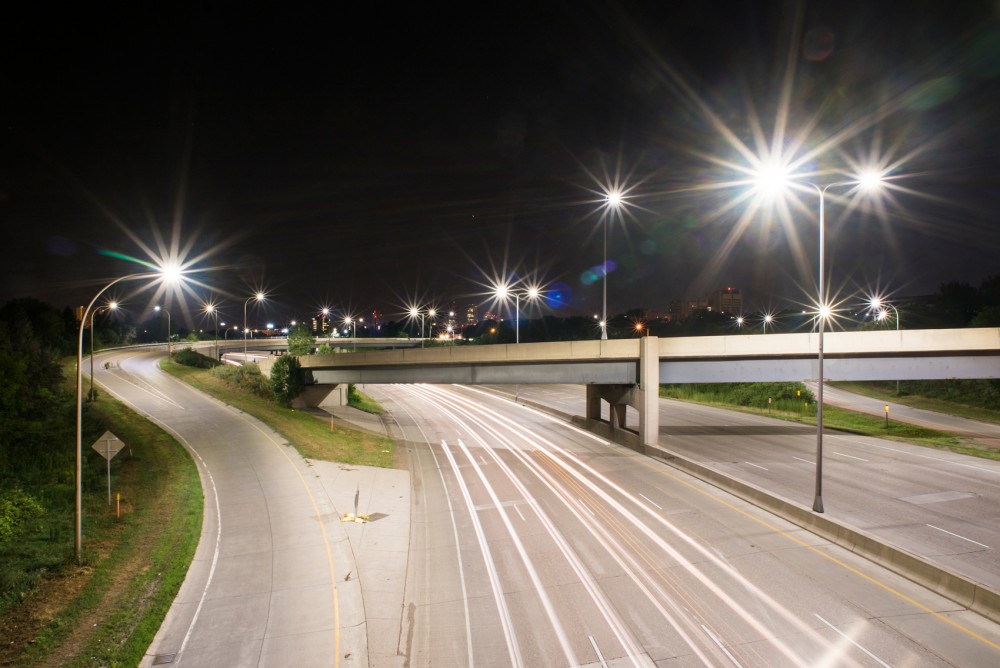For the first time since its inception, the functional and neighborhood impact of Interstate 94 will get another look.
At a two-day “Every Place Counts Design Challenge” workshop held last week, residents of the Rondo neighborhood in St. Paul and the University of Minnesota’s Prospect Park neighborhood worked with the U.S. Department of Transportation and urban designers to plan updates for the highway.
The workshop brought community members, design and policy experts to work with the Minnesota Department of Transportation on its “Rethinking I-94 project.
The initiative is part of a national U.S. DoT highway renovation project called Ladders of Opportunity.
Brian Isaacson, planning director for Rethinking I-94, said after nearly two years, the workshops have been the first steps taken to redesign the interstate.
Rethinking I-94 aims to change how the highway affects nearby communities and how to make it more easily accessible, Isaacson said.
The goal is to improve and install elements like bridges, off- and on-ramps, exits and overpasses to address community need, he said.
The scope of Rethinking I-94 stretches from east St. Paul to north Minneapolis, Isaacson said. The workshops focused on Rondo and Prospect Park neighborhoods because they were most adversely affected when the highway was built.
The interstate was built without much community input, said Meredith Howell, Ladders of Opportunity program manager.
“This is an opportunity to think more creatively and innovatively to rethink infrastructure to format [the interstate] to the neighborhoods’ needs,” she said.
Ken Ray, an urban designer who is part of a team hired by the U.S. DoT, said three other cities nationwide face similar issues and are involved in the workshop.
The goal is to see how to reconnect these communities while also involving them in the blueprint of the projects, he said.
The designs created by the teams focused on renovating bridges and exits with the community’s needs in mind.
One design included creating a roundabout at the Franklin Avenue and East River Parkway intersection to increase safety.
Dick Gilyard, a Prospect Park Association board member, said the idea for the roundabout had been brought up before.
Another idea Prospect Park pushed for was a lid to cover the interstate from 27th Avenue to Seymour Avenue, said John Kari, a Prospect Park representative to the workshop along with Gilyard.
Kari said Prospect Park is looking for designs that handle the noise and environmental impacts the interstate has, which resulted in designs that called for increased green space near the highway.
Gilyard said moving forward, the project should also look at traffic increases in Prospect Park, alternative modes of transportation and how to balance car movement to and from the interstate.
Widening the scope
Noel Nix, District 4 Ramsey County Commissioner Toni Carter’s aide, said Rethinking I-94 is the largest change to the interstate since it was built nearly 50 years ago.
Both Isaacson and Nix said the infrastructure for the highway is getting old and already due for renovations.
“The commissioner’s office is interested in how to restore pieces of what was lost when [the interstate] was first built and how to increase neighborhood aesthetic,” Nix said.
Ray said his team is writing a report based on the workshops, which will be given to the transportation department in cities involved in the Every Place Counts initiative.
The designs aren’t final but give community and city leaders something to take and build on as the project moves forward, he said.
Isaacson said the designs and community interaction will take at least another two years. After that, he said, the timeline for the renovations depends on what communities prioritize and whether they can secure enough funding.
Kari said he and Gilyard will stay involved in the project, giving Prospect Park’s aid.
“This project is not only a transportation opportunity [but also] a community development opportunity,” Kari said.








